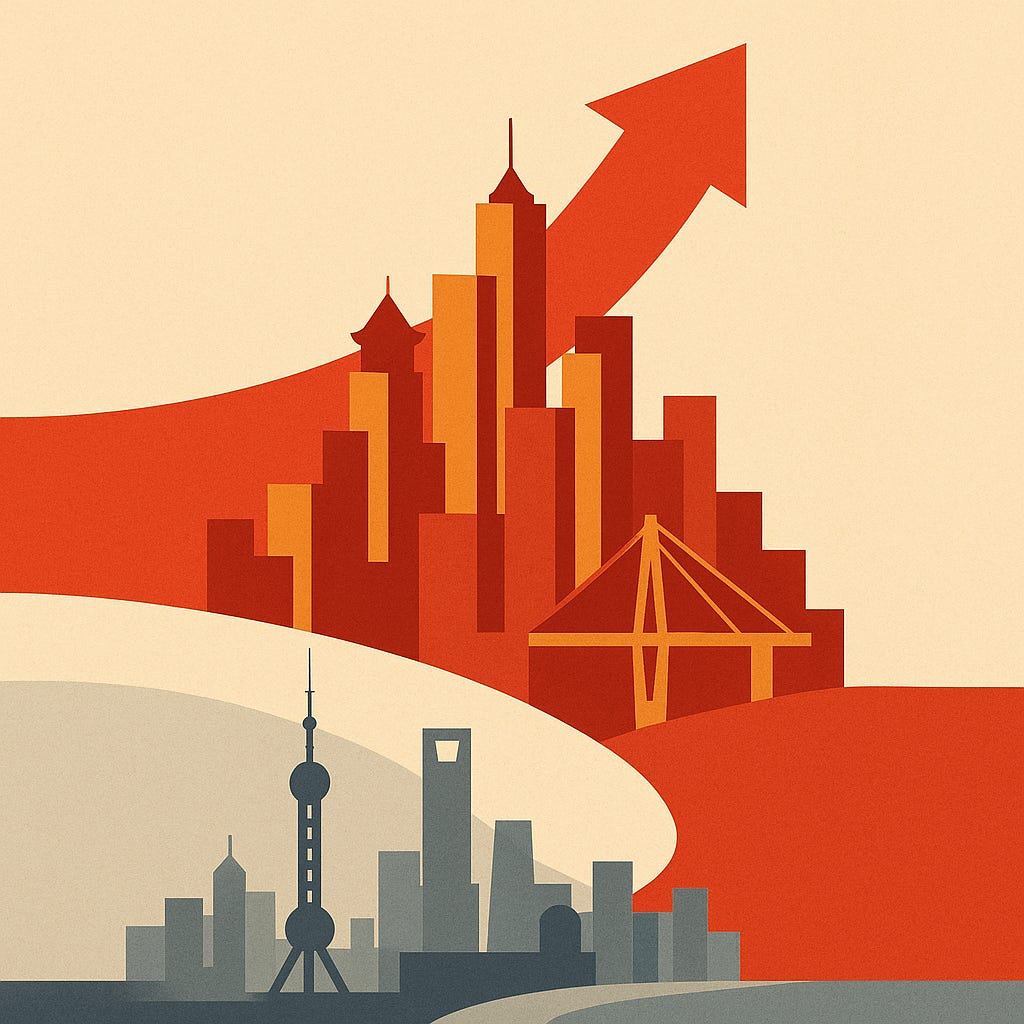How Chongqing overtakes Shanghai as China’s top consumer city
Manufacturing surge and vertical urbanism fuel 830 billion yuan retail boom as mountain city rewrites consumption playbook
Surpassed Shanghai three consecutive times in January-February, Q1, and January-April 2025, with total retail sales reaching 830 billion yuan in H1 2025, up 4.5% year-on-year.
Produced 2.54 million automobiles in 2024, second only to Shenzhen, with new energy vehicle output surging 90.5% to 953,200 units, outpacing national average by 60 percentage points.
Restaurant spending grew 9.1% to 251.99 billion yuan in 2024 while Beijing and Shanghai declined 4.9% and 5.3% respectively.
Nighttime commerce accounts for 60% of the city’s 1.62 trillion yuan annual retail total, powered by 37,000 hotpot restaurants and 24-hour establishments.
Housing costs one-fifth of Shanghai levels at 9,200 yuan per square meter, freeing 70% of disposable income for consumption versus savings.
For decades, the playbook for tapping into Chinese consumerism was written on the coast. That playbook is now being rewritten in the mountainous interior. Chongqing, a sprawling industrial hub, has unseated Shanghai as China’s top consumer city, a development that signals a fundamental reordering of the nation’s economic geography. For global brands, manufacturers, and policymakers, understanding this shift is no longer optional; it is critical to navigating the next chapter of Chinese growth.
Chongqing’s rise from an industrial powerhouse to China’s consumption leader reflects a deliberate strategy of converting extreme topography into experiential retail theater.
The shift demonstrates how second-tier cities can leverage manufacturing strength and cultural identity to compete with legacy commercial hubs even as national consumption growth slows to 3.4% year-over-year in August 2025.
The city surpassed Guangzhou in 2020 and Beijing in 2022 before its three consecutive victories over Shanghai in early 2025 signaled a structural reordering of China’s consumption hierarchy.
July 2025 marked another milestone when China Changan Automobile Group formally relocated its headquarters to Chongqing, joining FAW in Changchun and Dongfeng in Wuhan as the nation’s three state-owned automotive giants.
Manufacturing backbone anchors consumption capacity
Chongqing operates 39 of China’s 41 major industrial categories and all 31 manufacturing subcategories. This industrial breadth translates directly into employment stability and wage growth that underwrites consumer spending.
The automotive sector exemplifies this dynamic.
First-half 2024 production reached 1.21 million vehicles, claiming the national crown before full-year output of 2.54 million units placed it second only to Shenzhen. The cluster’s scale creates dense employment networks; Seres alone provides 18,800 jobs including 6,000 R&D positions around its Liangjiang New Area superfactory.
New energy vehicles accelerate growth momentum.
Production in this segment jumped from 391,000 units in H1 2024 to 953,200 units for the full year, representing 37.5% of total automotive output.
This 90.5% growth to over 953k units outpaces the national average by 60 percentage points and signals a faster transition away from internal combustion engines than in many coastal manufacturing hubs.
The Aito brand, born from Seres’ partnership with Huawei, demonstrates how vertical integration drives premium positioning.
The M9 SUV became China’s best-selling vehicle above 500,000 yuan in 2024, with the model alone delivering 150,000 units to break luxury segment sales records. Cumulative Aito series sales exceeded 700,000 vehicles, making it the only domestic brand penetrating top-ten rankings in that price band.
Beyond automotive, Chongqing produces one-third of global laptop computers at 93.85 million units annually, 6.57 million motorcycles representing half of national exports’ top-ten brands, and 392 million LCD panels. Semiconductor wafer capacity ranks third nationally while mobile phone output reaches 5% of global volume.
Manufacturing value-add accelerated in 2024.
Industrial enterprises above designated size posted 15.6% profit growth as the sector’s aggregate value-add climbed 7.5%, both exceeding national averages. This profitability expansion flows through to worker compensation, with per capita disposable income advancing two positions nationally to ninth place by mid-2025.
Vertical urbanism converts constraints into consumption theater
Chongqing’s extreme topography—only 2.39% usable flatland across a municipality the size of Austria—historically delayed retail brand entry by three years versus neighboring Chengdu. But city planners transformed this liability into experiential advantage through radical vertical development.
The strategy launched in 2012 targets “river-cliff-street-cave-sky” zones for immersive retail installations.
Light rail lines now pierce residential towers. Shopping mall entrances open onto rooftops. Transit stations morph into roller coasters threading canyon walls. This cyberpunk aesthetic attracts visitors seeking Instagram content while forcing retailers to innovate beyond standard format boxes.
Temporal expansion amplifies spatial gains.
Keep reading with a 7-day free trial
Subscribe to China Innovation Watch to keep reading this post and get 7 days of free access to the full post archives.


